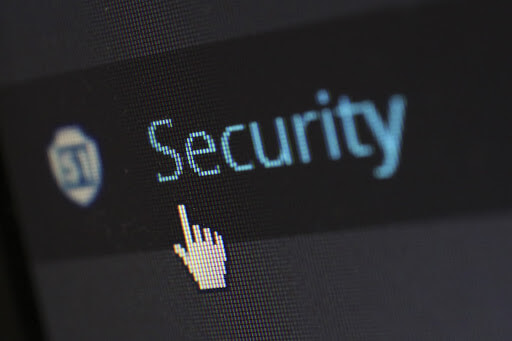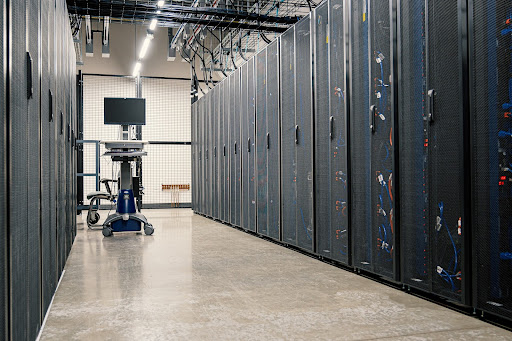Is Webflow Secure? 7 Security Details You Must Know
Something we get asked a lot is whether or not Webflow is secure. It’s an understandable concern for every company and user, because without proper security, you’re leaving your site at risk.
To help answer some of the most common questions around Webflow security, we’ve created this guide to explain everything you need to know. We’ll explain all of the security fail-safes put in place by Webflow, how the hosting is set up, and even where the servers are located.
By the end of this guide, you’ll have a much clearer understanding about the way Webflow works and peace of mind about the measures used to keep your site and your data safe.
What is Webflow?
In case you’re unfamiliar with how Webflow works or have forgotten some of the basics, here’s a quick refresher.
Webflow has revolutionised the web development process by avoiding the expensive and complex past methods of website building, whilst also removing the limitations of simpler drag and drop website builder tools.
Instead, Webflow offers fast hosting and robust security in a web design platform that requires no, or very little, coding. Sounds good, right?
Since its inception, it has helped over 3,500,000 designers and customers to build and host smooth, beautiful websites without the need for excessive hours of gruelling coding where mistakes are difficult to identify.
The all-in-one platform offers a complete service to establish a successful website from scratch – including CMS, hosting, and drag-and-drop designing.
A key difference between Webflow and other website builders, is that Webflow comes with inbuilt plugins for SEO efficiency, forms, and other functions. With its easy-to-use interface, even people with minimal web development skills can design attractive and functional websites.

1. How secure is Webflow?
All websites in the world are vulnerable to cybercrime. However, the stronger your web security is, the less likely it is to suffer from DDoS, Phishing Attacks, Malware, SQL, and other cyber attacks.
Verizon’s 2022 data breach report claims that 43% of cyberattacks are targeted toward new and small businesses because they tend to overlook web security.
So, what should you be doing to protect yourself?
The primary security a website needs is Secure Sockets Layer (SSL). It helps to secure the internet connection between two sources, making it difficult for hackers to access or modify the data exchange.
There are some web hosting companies that provide free SSL certificates, but a majority of them charge extra. Depending on the provider, SSL certificates have a maximum validity of 13 months and need renewal.
A valid SSL certificate means the website has “HTTPS” and a “Lock” icon in its URL. You can also use the SSL Checker to be sure if the certificate is valid or not.
Here is our Webflow security breakdown:
SSL
Webflow offers free SSL certification for all of its hosted websites, and it is renewed automatically unless a custom SSL certificate is in use. The certifications are provided by Let’s Encrypt, the world’s largest certificate provider with over 300 million users.
SOC 2
The company complies with SOC 2, an auditing system created by the American Institute of CPAs (AICPA). It was developed to ensure service providers like Webflow follow and maintain strict procedures to secure their users’ data.
Webflow’s latest SOC 2 audit was performed by KirkpatrickPrice. They tested not only the company’s security practices, guidelines, and operations but also the physical and logical access.
AWS
As Webflow is powered by AWS, it benefits from Amazon’s already strict security measures. AWS has tools like Amazon Inspector and Amazon Macie, which help to detect and secure threats, and protect cloud data.
Plugins and integrations
Many website builders like WordPress rely on third-party plugins and integrations. These services are usually free, but totally dependent upon their developers, who are of various levels of skill and reliability. If these developers stop caring about security or stop releasing updates, the plugins become liabilities.
With inbuilt functions like Webflow SEO tools, drag-and-drop design, Forms, CMS, and others, you minimise the need to use third-party integration.
To process payments and manage customers, website builders need to rely on third-party services. Webflow carefully chooses its mandatory integrations and trusts known names like Stripe, PayPal, and Mailchimp. These service providers are leaders in their industries and have high-security credentials. Not to mention, Webflow personally never accesses sensitive payment details.
Additional Webflow security measures
Webflow’s security is further strengthened with employee background checks and confidentiality agreements. Their official laptops are monitored with top antivirus protection, and the data drives are encrypted for extra safety.
The workplace is also guarded through key fob access doors and is under CCTV surveillance 24/7. As you’d expect, an alarm system is also in place in case of suspect activity.
Webflow maintains the highest industry standards, including ISO/IEC 27001 and the CIS Critical Security Controls. It also conducts regular security training with its employees.

2. How good is Webflow hosting?
It’s excellent. Webflow Hosting is powered by Amazon Web Services (AWS), meaning you get access to the fastest and most scalable hosting tech available on the market.
AWS is globally renowned for its cloud computing, database storage, and content delivery networks (CDN). It’s used by government agencies, not-for-profit organisations, education centres, and businesses of all scales across 190 countries.
Amazon first launched AWS in 2002 to support its online retail infrastructure. In 2006, they began offering AWS Infrastructure as a Service (IaaS) to other businesses. If the world’s largest e-commerce company can run hassle-free with AWS, then it can likely handle yours!
Webflow also uses Fastly, the world’s fastest, most reliable serverless compute platform, as an additional support to its web infrastructure to help create smooth and fast-functioning websites. This makes Webflow the ideal place to host websites, irrespective of their size.
3. Where are Webflow data sites located?
Building with Webflow is for everyone, everywhere. Webflow is powered by over 100 data centres and servers that run 24/7 across the world.
These are divided into 27 geographical regions and then further into over 87 availability zones covering North & South America, Europe, Asia Pacific, the Middle East, Africa, and of course – Australia.
As the platform gains thousands of new customers every day, more servers are being scheduled to avoid congested networks and maintain efficiency.
4. Where is Webflow’s data stored?
Webflow stores its customers’ data in the US, with new upcoming data storage plans in Europe. It legally complies with CCPA and GDPR regulations to ensure that all customers’ data is secure.
Here is the list of data Webflow stores in its cloud storage:
- Names
- Usernames and email addresses
- Billing email addresses
- Payment history and invoices (credit card data is stored and processed separately by Stripe)
- Phone Number (optional)
- Billing addresses
- Company (optional)
- Locations (city, country)
- Job titles (optional)
- Hirable (Is this persona available for hire? – also optional)
- Personal website (optional)
- Employer (optional)
- Referred by (optional person who referred the user to use Webflow)
The stored data is encrypted to protect Personal Identifiable Information (PII) and other private data from cybercriminals. It also uses Transport Layer Security (TLS) to secure its in-transit data exchange.
Customers are allowed to request their data or get it deleted under the company’s terms and conditions in accordance with CCPA or GDPR regulations.
The platform uses third-party services to carry out its functions. These service providers have limited access to Webflow customers’ data, with each having its own privacy policy. The data is limited internally to employees who need it to perform their duties, such as the support team.
If you’re located outside of the US, and have legal requirements to host your data within your home country, you still have options.
You could create an app that plugs directly into your Webflow website and sends data back to a server located in your preferred country. Or, you could bounce users to another landing page hosted outside of Webflow.
As for a more permanent solution, there is currently a wishlist item for ‘Country/Regional Data Hosting with Webflow’. So we could see this feature in the near future, but as of November 2022 there is no update on the timeline for rolling it out.
5. Does Webflow offer backups?
Webflow offers free backups for all websites, regardless of the chosen plan. It doesn’t provide scheduled backups, but automatic backups are created on every 10th autosave.
There is no limit to the number of backups offered by Webflow. They are easily restorable with a few clicks, and whenever an earlier version is restored, the current version gets backed up.
Ingeniously, you can even preview every backup before restoring to avoid loading the wrong versions. You also have the ability to manually create backups for some extra assurance.

6. Are Webflow servers fast?
Webflow Hosting is powered by AWS and Fastly, making their servers one of the fastest in the market. They claim Fastly to be the fastest CDN available, which reduced their average response times from 50 milliseconds to 10 milliseconds!
Apart from this, Webflow also supports HTTP/2, which is the major upgraded version of HTTP. This allows sending and receiving multiple responses in a single connection, drastically saving time as there’s no need for a new connection per new request or response.
7. Uptime and customer service
Webflow servers are constantly up and running, though as you’d expect, there can be some minor instances that impact uptime. All in all, the uptime is 99.99%, and their support team is always ready to assist around the clock.
In case of downtime, Webflow fixes issues within 30 minutes. They have a highly experienced team ready, on hand for any kind of server-related emergencies.
If your Webflow website is down, you can check the server status at IsItDownRightNow. If the server is still up, but your site is down, reach out to your digital agency if they are managing your site, or to Webflow’s responsive customer support if you’re managing your site yourself. Webflow support is available for all customers and also through direct live calling for Webflow Enterprise customers from (Monday – Friday).
Discuss Webflow’s plans and pricing with experts
Webflow offers a total of 8 site plans – 5 are for general websites and 3 are for e-commerce. All plans included the basic features; free SSL, automatic backups, SEO and 99.99% uptime.
The 5 general plans are Starter, Basic, CMS, Business, and Enterprise, whereas the e-commerce plans are Standard, Plus, and Advanced.
Apart from site plans, Webflow also has Workspaces. These allow you to create a custom space for designing your own codes, organise designs and work with other Webflow users, like teammates and clients. You may also need Workspace to host your site with a different hosting platform.
Overall, Webflow is the ideal hosting and website-building platform for anyone who wants to have a secure, quick, and reliable site that will load in under 3 seconds. Anything longer will result in losing over 40% of traffic. Ouch.
IGNITE is an official Webflow enterprise partner and here to take your website to the next level. Our Webflow agency experts can help you build a website that is fast, smooth, safe, and attractive. Contact us today to get started!